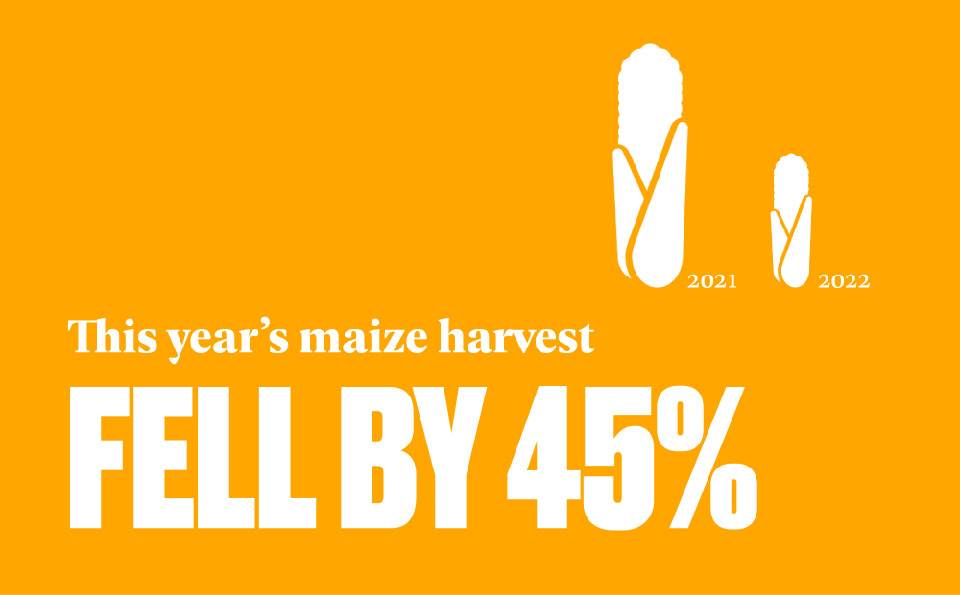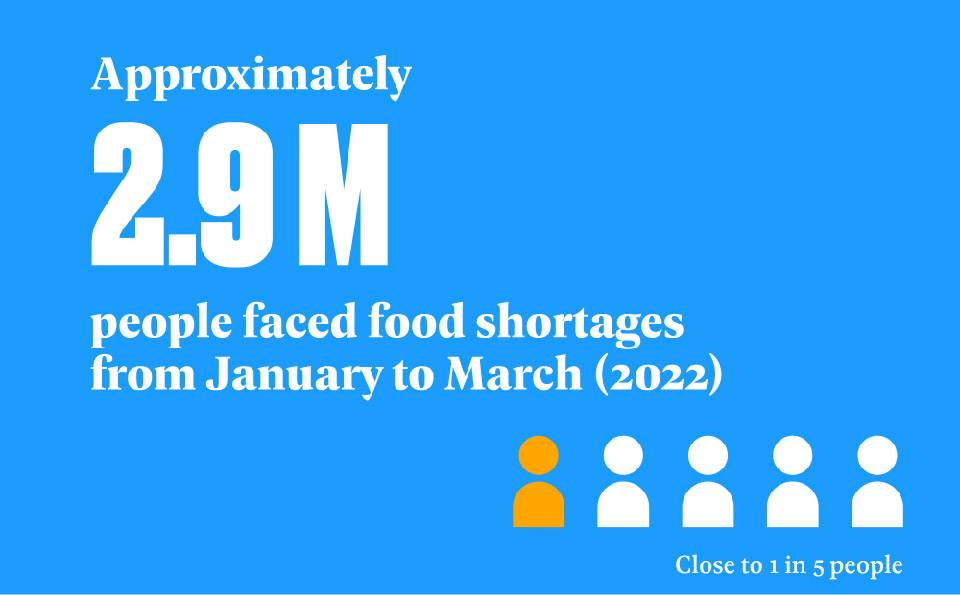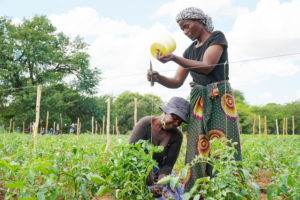Food shortages and price hikes hit Zimbabwe as climate change disrupts rain patterns
Zimbabweans are no strangers to drought. But this year’s rainy season set a new 40-year record in rainfall scarcity. Yet, while many Zimbabwean farmers grappled with a lack of water, just months before thousands saw tropical storms and flooding destroy their property and infrastructure.
These climate disasters have collided with a global economic shake-up, caused by the war in Ukraine and its impact on fuel and food supplies. As a result, many households in the southern African country have been left struggling, with resources stretched to the limit.
Harvests fail amidst climate chaos
In January this year, Tropical Storm Ana ravaged parts of Zimbabwe causing fatalities and battering infrastructure. In its wake, more than 800 households and over 50 schools were left damaged. As rivers swelled and spilled over their banks, over 2,000 households lost their crops, with some livestock also swept away[i].
In the country’s semi-arid southern region, the rainy season typically arrives in November and continues through to the end of March. This year, the rain failed to materialise in February. The persistent drought continued right through to mid-March, resulting in the driest February in 40 years in this region of Africa[ii]. When the rain finally arrived, it brought a deluge; heavy downpours and intense storms damaged crops. Any surviving plants had already suffered too much drought-stress to yield a decent harvest.
This combination of climate disasters has severely affected the nation’s domestic food supplies. With maize yields 45% lower than in 2021[iii], an estimated 2.9 million people faced food insecurity from January to March. Acute food shortages are expected to continue until at least September this year[iv].
Hilton Zvidzayi, Practical Action’s Knowledge Management and Communications Coordinator in Zimbabwe, said: “The government announced it would start importing maize from Malawi and Zambia in May to cover the grain deficit. Farmers are largely withholding whatever excess grain they have due to low producer prices offered by government and instead selling to private buyers who in turn will charge more for the staple maize meal.” The outlook is particularly concerning for smallholders who depend on their harvest as a primary means of income, as well as a food source.


Global inflation exacerbates food insecurity
This year’s disastrous weather events have unfolded against a backdrop of economic instability. The war in Ukraine has affected the market value of grain, fuel and other vital resources globally, and no currency has been spared from rising inflation. Alarmingly, inflation in Zimbabwe hit three-digit levels this year[v]. As a result, the price of basic commodities increased by an average of 31% between May and June this year[vi]. A knock-on challenge for farming communities has been the sharp increase in the cost of fertilisers, likely to affect the next growing season. In an effort to protect the currency’s value, President Mnangagwa introduced gold coins as legal tender for the first time in July[vii]. But for the average Zimbabwean household, gold prospects are a far cry from their day-to-day struggle to find food and water: in May, Zimbabwe was added to the UN’s list of hunger hotspots.
Climate adaptation is vital for economic resilience
As the unpredictability of rain patterns looks set to continue, practical, locally relevant solutions on the ground are more important than ever. In Zimbabwe we’ve been supporting communities to maximise use of the natural resources available to them and adopt sustainable, climate-resilient farming methods that will help them withstand external shocks (such as rises in fuel costs).

Members of the Zenzele Community Garden in Gwanda District, Matabeleland Province.
Our Pfumvudza project introduced a new drought-resistant planting method to many families. It was so successful that the Government of Zimbabwe recognised Pfumvudza as an early, preventative action to improve food security in drought-prone areas; they are now rolling it out to 1.8 million farming families with our support. In arid Matabeleland (southern Zimbabwe), we’ve worked with communities to climate-proof their community gardens, set up boreholes and solar-powered irrigation systems, and establish an innovative, low-cost way to capture rainwater during heavy downpours. Farmers in the region have also received support to breed poultry – an asset that will boost food security during adverse weather events, as well as diversifying income sources.
Flood and cyclone induced disasters are a growing threat in Eastern Zimbabwe, and mitigating their impact is becoming a central part of our programmatic focus here. As a member of the Zurich Flood Resilience Alliance, we have introduced our successful disaster preparedness programme in this part of the country. So far, this has seen the establishment and training of disaster risk reduction committees in selected wards and the delivery of evacuation and first aid training courses.
Whether the rain is excessive, destructive, or scarce, we believe that climate adaptation, at both local and national levels, is key to building a more robust future. Our practical solutions on the ground enable communities to make tangible steps towards a more secure future. You can find out more about sand dams, which harvest water for year-round usage, and support our water security work here.
[i] Zimbabwe: Floods and Storms I Flash Update No. 1, United Nations Office for the Coordination of Humanitarian Affairs (OCHA), February 2022.
[ii] Southern Africa Seasonal Monitor, World Food Programme (WFP), March 2022.
[iii] Global Information and Early Warning System Country Brief – Zimbabwe, Food and Agricultural Organisation (FAO), June 2022
[iv] Hunger Hotspots report, FAO, 2022
[v] Zimbabwe Country Brief, World Food Programme, June 2022
[vi] Zimbabwe – Food Security and Markets Monitoring Report, WFP, June 2022
[vii] Zimbabwe to introduce gold coins as local currency tumbles, The Guardian, July 2022